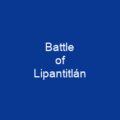The Runaway Scrape events took place mainly between September 1835 and April 1836 and were the evacuations by Texas residents fleeing the Mexican Army of Operations. The conflict arose after Antonio López de Santa Anna abrogated the 1824 Constitution of Mexico and established martial law in Coahuila y Tejas. It was Sam Houston’s responsibility, as the appointed commander-in-chief of the Provisional Army of Texas, to recruit and train a military force to defend the population.
About Runaway Scrape in brief

Henry Smith was elected as the representative in Nacogdoches, Texas, who also served as the commander of the volunteer army on December 1, 1837. The Consultation of 1835 convened in San Felipes de Austin on November 3 of that year. Their creation of a provisional government based on the 18 24 constitution established the General council as a legislative body with each municipality allotted one representative without any clearly defined powers of the position. After a little over a month of training the troops, Houston reached a crossroads where he ordered some of them to escort the fleeing refugees farther east while he took the main army southeast to engage the Mexican forces. The news of the Battle of the Alamo and the Goliad massacre instilled fear in the population and resulted in a mass exodus of the civilian population of Gonzale, where the opening battle of the Texian revolution had begun and where they had sent a militia to reinforce the defenders at the mission. The refugees from Gonzales escaped first to the Colorado River and then to the Brazos, as evacuees from other areas trickled in and new militia groups arrived to join with Houston’s force. The refugee refugees were accompanied by the newly forming provisional army, as Houston bought time to train soldiers and create a military structure that could oppose Santa Anna’s greater forces. He began amassing his army on November 28,1835, soon followed by General Joaquín Ramírez y Sesma leading the Vanguard of the Advance across the Rio Grande in December.
You want to know more about Runaway Scrape?
This page is based on the article Runaway Scrape published in Wikipedia (as of Nov. 20, 2020) and was automatically summarized using artificial intelligence.







